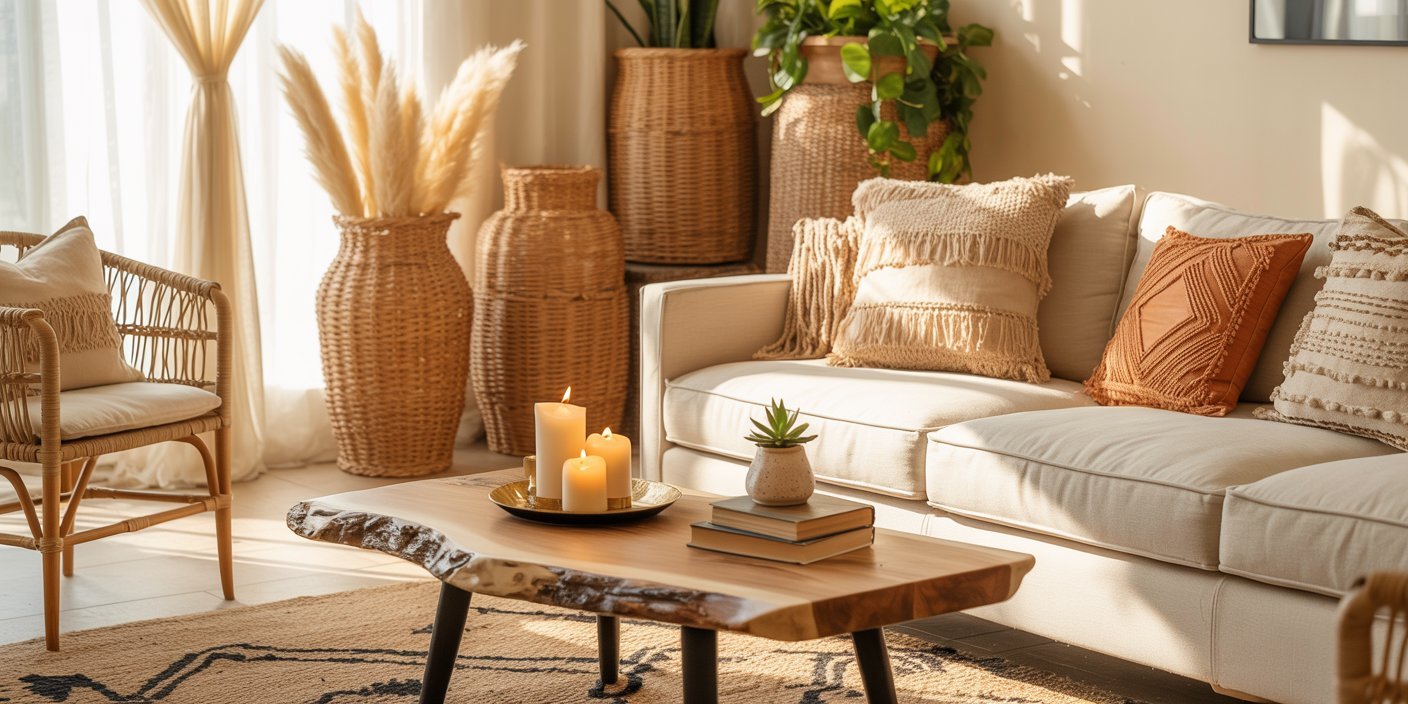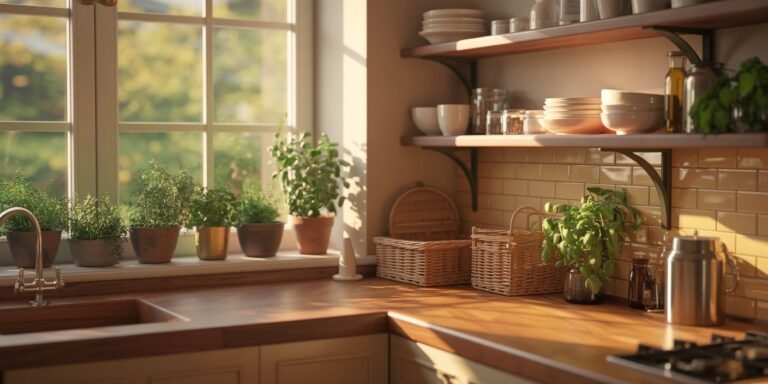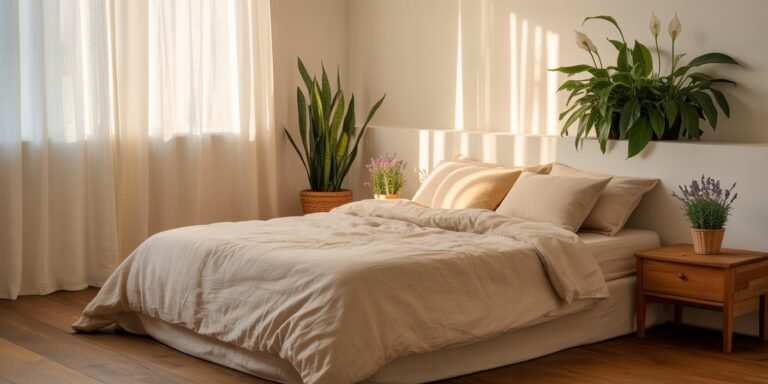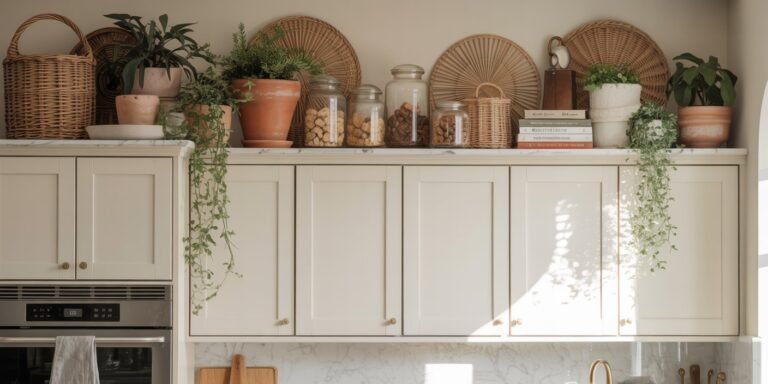There’s something about a boho living room that makes you want to exhale. It’s unpolished, personal, and alive with stories—each corner layered with textures, color, and meaning.
My love for this style began years ago when I realized my home felt too curated and stiff. I wanted warmth, not perfection. I wanted a space that felt like it evolved with me.
Over time, I learned that true boho design isn’t about buying macramé wall hangings or throwing patterned pillows everywhere.
It’s about creating a rhythm—a natural balance between what you love, what feels lived in, and what inspires calm. The beauty of it? There’s no wrong way to do it, only your way.
Below are eight boho living room ideas I’ve personally tried and refined.
They’re not the usual “add rattan and greenery” tips—you’ll find a mix of creative concepts, styling secrets, and how-to moments that turn your space into something soulful and original.
1. Layer “Collected Chaos” with Intention
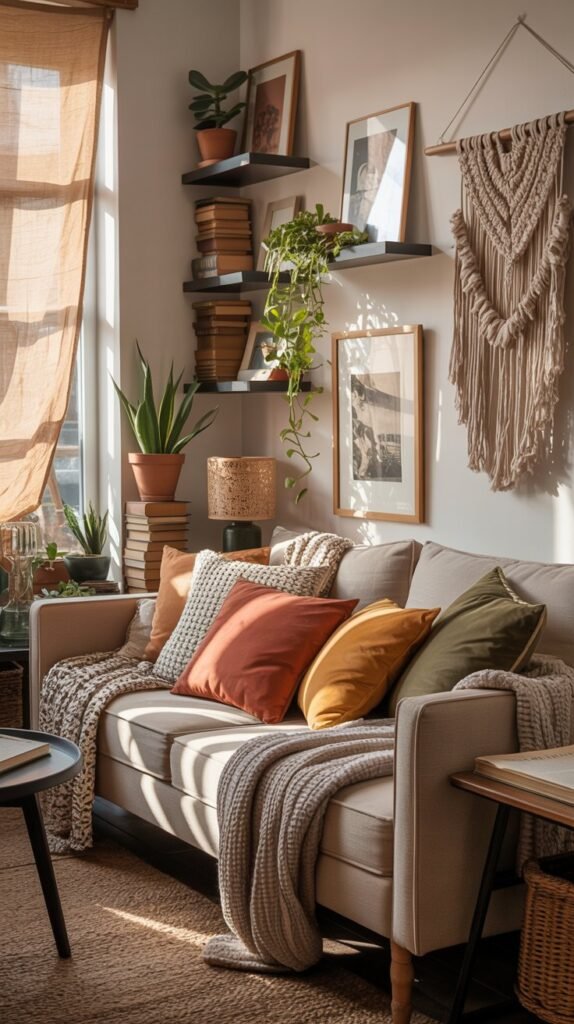
When I first started experimenting with boho style, I made the mistake of cluttering every surface.
The trick is to create what I call “collected chaos”—a look that feels spontaneous but actually follows a rhythm.
How to Do It:
Start by gathering pieces that tell your story—books, travel finds, pottery, or textured baskets. Spread them out on the floor first and group them by tone or material.
Then, place them in layers: taller items in the back, smaller ones upfront. The goal isn’t symmetry; it’s flow.
What You’ll Need:
- Natural materials like wood, clay, and woven baskets
- A low shelf, coffee table, or console
- A few personal keepsakes or handmade accents
Pro Tip: Keep at least 30% of the surface area open. That negative space makes the layers breathe, giving the eye somewhere to rest.
2. Build a “Mood Corner” Instead of a Gallery Wall
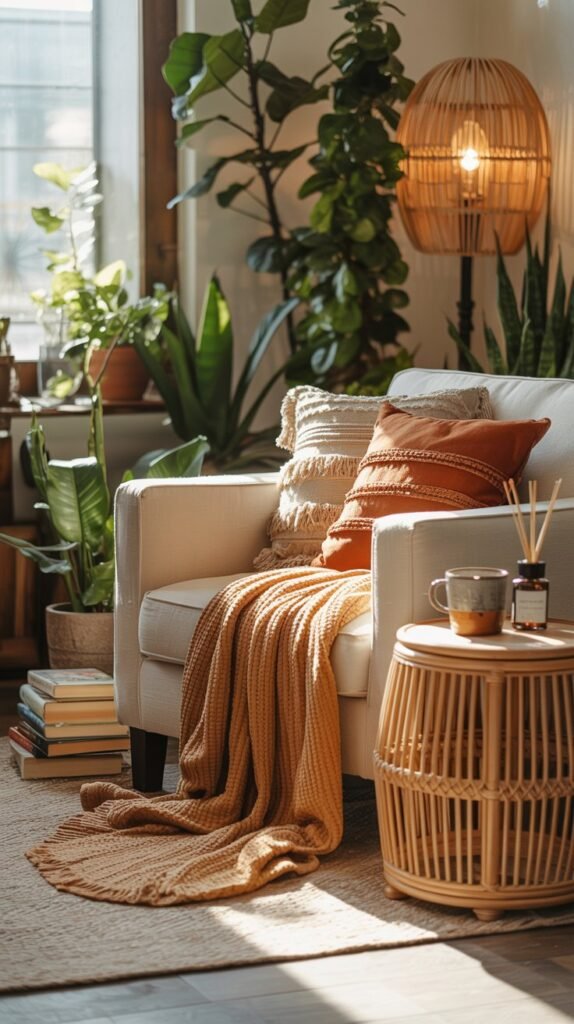
Most boho rooms feature gallery walls, but I’ve found something even more intimate: the “mood corner.”
It’s a small vignette—a reading chair, a lamp, maybe a textile draped over a wall—that visually pulls you in and grounds the space.
How to Do It:
Choose a quiet corner and layer it with comfort. Start with a floor rug or kilim mat as the foundation. Add a cozy chair or pouf, then hang one oversized textile, not multiple small frames.
That textile could be an embroidered throw, a hand-dyed cloth, or even a vintage sari. Finish with a floor lamp or lantern for ambient lighting.
What You’ll Need:
- Floor rug or woven mat
- Accent chair or pouf
- One statement textile (wall-hanging or drape)
- Soft lighting—floor lamp, lantern, or candle cluster
Pro Tip: Play with heights—hang the textile lower than expected so it sits visually close to the furniture. It creates a cocooning effect that feels inviting and earthy.
3. Mix Scents and Textures for a Sensory Experience

What makes a boho living room memorable isn’t just how it looks—it’s how it feels and even smells. I learned this while redecorating my own small apartment.
The day I started diffusing patchouli and burning cedar incense, my entire space began to feel like a retreat.
How to Do It:
Begin with textures—mix rough (jute, linen) and smooth (silk, cotton) fabrics across your sofa, pillows, and curtains.
Add organic scents that connect to nature—essential oils like sandalwood, vetiver, or sweet orange work beautifully. Keep the scent subtle and steady, not overpowering.
What You’ll Need:
- Textured fabrics (linen, cotton, wool)
- Natural diffuser or incense
- A mix of scented candles for layering aroma
Pro Tip: Change scents with the seasons. In cooler months, lean into warm and smoky notes. In summer, switch to herbal or citrus-based blends that lift the room’s energy.
4. Create a “Story Sofa” with Layered Fabrics

Forget buying a new sofa to get that relaxed boho look. Instead, transform the one you already have.
I call this the “story sofa” method—it’s all about layering textiles that tell a story through color, pattern, and origin.
How to Do It:
Start with a solid-colored base sofa or futon. Drape a throw blanket diagonally over one arm and layer different fabrics—one handwoven, one patterned, and one neutral.
Mix textures like cotton, wool, or vintage linen. If you have old scarves or table runners, use them as accent layers too. Finish with mismatched cushions in earthy tones.
What You’ll Need:
- 2–3 textured throws or fabrics
- Cushions in mixed patterns and tones
- A few handmade or vintage fabric pieces
Pro Tip: Keep the palette grounded. Think terracotta, olive, mustard, and sand—shades that tie the space together even when patterns clash.
5. Build an Earthy Base with Natural Surfaces
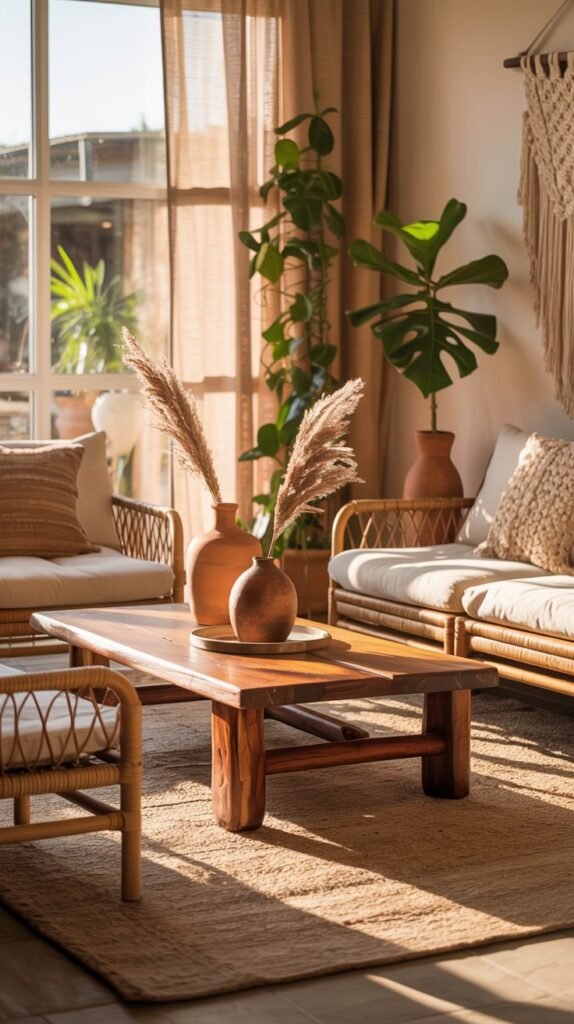
Most people start decorating with furniture—but in a boho home, the surfaces set the tone.
When I redid my own living room, I swapped out sleek finishes for rougher, natural ones, and the entire space transformed overnight.
How to Do It:
Replace synthetic rugs with jute or sisal, and trade glossy tables for raw wood or rattan.
If your floors are too polished, layer area rugs to soften them visually. Add woven trays or ceramic coasters to bring tactile warmth to your surfaces.
What You’ll Need:
- Jute, hemp, or sisal rugs
- Wooden or rattan furniture pieces
- Ceramic, clay, or textured decor bowls
Pro Tip: Imperfection is the goal here. Let your surfaces show grain, texture, and age—it gives your room a soul.
6. Add “Nomadic Lighting” That Moves with You

One thing I noticed while traveling is how light shapes mood. Boho spaces thrive on this flexibility.
Instead of fixed lighting, I started experimenting with what I call nomadic lighting—small, movable sources that shift as your routines do.
How to Do It:
Use a mix of portable lights—floor lanterns, string bulbs, rechargeable table lamps, or even candles in tinted glass jars.
Arrange them in layers: a few low lights at floor level, one ambient light near your sofa, and a warm glow near a reading spot. This type of setup makes your space feel alive, constantly changing with you.
What You’ll Need:
- Lanterns, candles, or small lamps
- Dimmable bulbs for warm tones
- Woven or tinted glass shades
Pro Tip: Avoid overhead lighting as your main source. Let the glow come from corners and side areas for that soft, relaxed atmosphere boho homes are known for.
7. Embrace “Living Layers” with Plants and Natural Movement
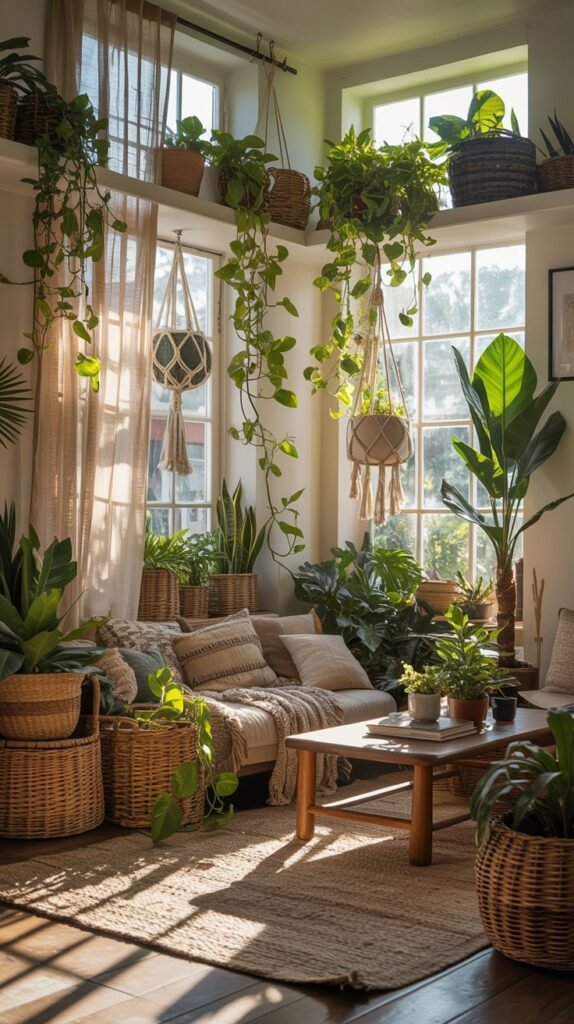
Plants are a must for boho interiors—but it’s how you use them that matters. I stopped treating them as decor and started seeing them as part of the room’s rhythm.
How to Do It:
Group plants in clusters of three—one tall, one trailing, one small. Vary the heights using stools, hanging baskets, or shelves.
Choose plants that move slightly with air, like ferns or palms, so they bring natural motion into your space.
What You’ll Need:
- Variety of plants (tall, hanging, small)
- Natural pots (terracotta, clay, woven baskets)
- Stools or plant stands for layered heights
Pro Tip: Place plants near light sources but never in straight lines—let them flow organically around the room for that untamed yet balanced look.
8. Curate Energy, Not Just Decor
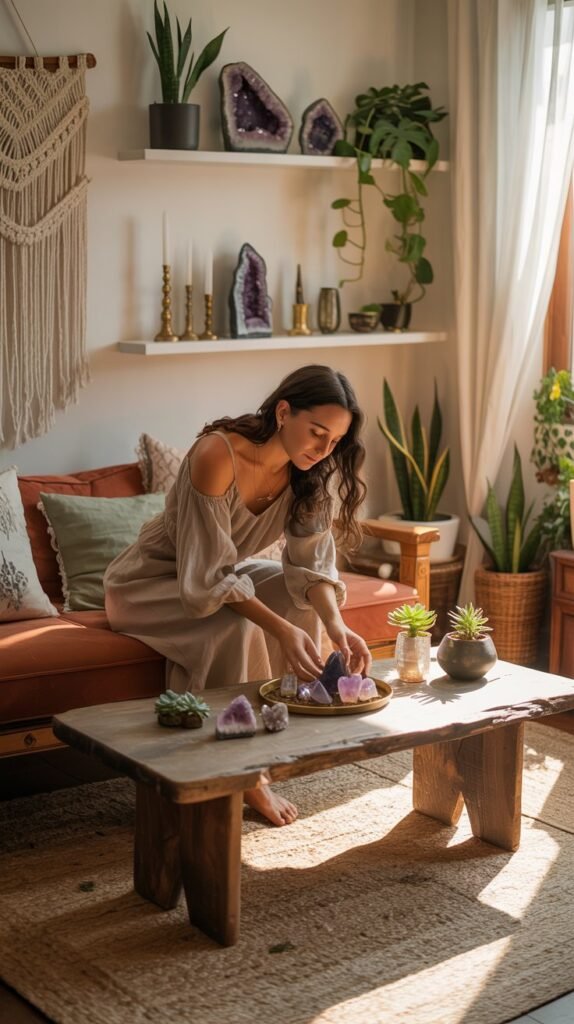
Here’s the part no one talks about. Boho design isn’t just about what you see—it’s about how you feel in the space.
After I finished decorating, I realized the room only came alive once I started curating energy: light music, open windows, and little rituals that made it mine.
How to Do It:
Each morning, open the windows for airflow. Play soft background music or natural sounds to shift the mood. Keep a small bowl of crystals, incense, or a diffuser nearby—whatever grounds you.
Rearrange your layout occasionally; boho design thrives on evolution, not perfection.
What You’ll Need:
- A soft playlist or ambient sound
- A diffuser, incense, or natural scent source
- Personal ritual corner or mindfulness spot
Pro Tip: Change one element every few weeks—a cushion cover, a plant pot, or a light position. It keeps the energy fresh and your creativity flowing.
Final Thoughts
Creating a boho living room isn’t about following strict design rules — it’s about letting your personality and creativity flow through every detail.
Whether you’re layering textured throws, hanging handwoven wall art, or styling plants in vintage baskets, the beauty of boho decor lies in imperfection and warmth.
Start with what you already own, mix it with natural materials and handmade touches, and watch your space come alive with character and comfort.
FAQ
1. What colors work best for a boho living room?
Boho rooms usually thrive on earthy tones — think terracotta, beige, olive green, rust, mustard, and soft neutrals. You can add pops of jewel tones like emerald, sapphire, or deep plum for a more eclectic touch.
2. How do I make my living room boho on a budget?
Use secondhand items, thrifted baskets, DIY wall hangings, and repurposed fabrics.
Layer rugs, add greenery, and mix textures with pillows or throws for a relaxed, collected-over-time look.
3. Can a minimalist home still look boho?
Yes! Minimal boho combines clean lines with soft, natural textures and earthy hues.
Focus on fewer pieces that have organic or handmade details to keep it balanced and calming.
4. What’s the key element in boho living room decor?
Layering and texture are key. Combine wood, rattan, linen, wool, and clay to create depth and warmth — it’s all about creating a lived-in, cozy atmosphere.

